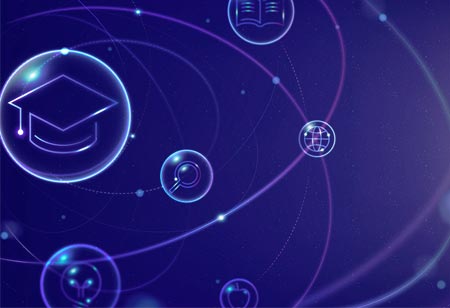THANK YOU FOR SUBSCRIBING
Be first to read the latest tech news, Industry Leader's Insights, and CIO interviews of medium and large enterprises exclusively from Education Technology Insights
Best Practices of Learning Analytics in K12 Education
Learning analytics technologies are used by educational institutions primarily to identify each student's possible issue areas and to swiftly solve them.

By
Education Technology Insights | Wednesday, November 15, 2023
Stay ahead of the industry with exclusive feature stories on the top companies, expert insights and the latest news delivered straight to your inbox. Subscribe today.
Learning analytics technologies are used by educational institutions primarily to identify each student's possible issue areas and to swiftly solve them. Data-based learning analytics can determine whether the pupils truly benefit from the instruction and whether they can retain the information they learn. Using this analysis, the teachers can get a comprehensive picture of a student's performance over the course of the school year and then create an action plan to help with learning.
Fremont, CA: The measurement, collecting, analysis, and reporting of data on learners' academic performance and circumstances for understanding and optimizing learning and improving the environments in which it occurs is referred to as learning analytics.
Learning analytics technologies are used by educational institutions primarily to identify each student's possible issue areas and to swiftly solve them.
The efficacy of the education offered cannot be determined solely based on assessment results, whether through classroom instruction or online learning. Instead of overwhelming their students with the material, teachers must be aware of their student's learning potential. Data-based learning analytics can determine whether the pupils truly benefit from the instruction and whether they can retain the information they learn.
Best Practices of Learning Analytics in K–12 Education
1. Monitor Students with Poor Academic Performance: Teachers can detect students who are not finishing classes on time or need more than one try to pass a test by having precise information about each student's performance.
Thus, it is possible to identify pupils in danger of failing a test. You can prevent these pupils from quitting school and ensure they achieve high exam scores by giving them special attention.
2. Monitor Student involvement: By looking at the analytics report, you may monitor student involvement in your classroom. The amount of time students spend using course materials indicates their interest. It is possible to determine how much time each student spent on a particular chapter.
The report can be further broken down by the content they have viewed, such as how often they have watched videos or listened to audio files. The main purpose of including multimedia components in an eBook is to increase interaction and interest. Therefore, remembering how frequently students interact with these parts will enable you to determine whether they are paying attention to the lesson.
3. Offer individualized lesson plans: The learning potential of each student is unique. Some learners can retain information quickly, while others may need more time. With eBooks, students can learn at their own pace.
Teachers can use the analytics report to view each student's learning style and, in response, create a lesson plan to support their academic progress. Students can be given additional readings or assignments from instructors, which can eventually aid in their comprehension of the material.
4. Assessing and Comparing Student Performance Using Learning Analytics: In the new era of conceptual understandings instead of rote memorizations, educators want to ensure that knowledge delivery is efficient and helps students learn and, more importantly, remember what they're taught.
By doing this, they'll be able to tell where the pupils' performance has improved and where it still needs to be improved. Using this analysis, the teachers can get a comprehensive picture of a student's performance over the course of the school year and then create an action plan to help with learning.







